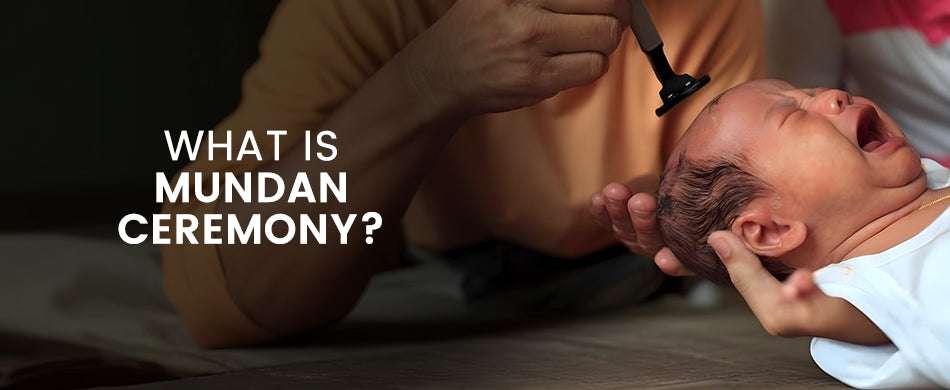
Mundan Ceremony: Baby’s First Hair Cut
- by Riddhi Sharma
- 1 min 31 sec
Table of Contents
What is the Mundan Ceremony?
Chaula, popularly called Mundan, is one of the most important samskaras in the Hindu religion. The ceremony involves shaving off the baby’s first or birth hair, generally when the baby is around one to three years old.
According to mythology, the mundan function relieves the baby from their past life, protects them from evil spirits, and brings them good fortune. It represents letting go of the past and welcoming the future. Most families perform the ceremony in the presence of a priest, family, and friends.
When is the Right Time to Perform Mundan?
As mentioned above, the Chaula ceremony must be performed between the ages of 1 and 3. It is believed that by this time, the child is not as fragile as a newborn and can be a part of the rituals without affecting their health.
Though quite rare, some families plan the mundan ceremony in the later years of the child's birth. However, it is usually organised in one of the odd months and years, like 1, 3, 5, 7, 9, or 11, since the birth of the child.
Mundan Ceremony Rituals – Step by Step
Here’s how the Mundan is usually performed:
- The hair-cutting ceremony for babies is performed in a temple, pilgrimage site, holy ghats, home, or even barber shops.
- Prayers are offered to the deities, along with fruits, flowers, and sweets.
- A priest shaves a small amount of the baby’s hair while the child’s mother holds them in their lap during the entire function.
- The barber completes the head shaving.
- Usually, the baby’s paternal aunt or bua takes the hair in her hand, ensuring the locks don’t fall on the ground.
- Sandalwood and turmeric are applied to the baby’s head after all the hair is removed. This helps protect the baby’s scalp from infections, heals cuts, etc.
- After this, the baby is cleaned with a cloth and dressed in new clothes.
- The family members give blessings to the child. Sweets are distributed, followed by singing and dancing.
Why Mundan Ceremony important for Babies?
Each Hindu ritual has a unique significance that supports your baby’s growth and development. For Mundan, the list of benefits is as follows:
- The ceremony wards off the negative legacy of the baby’s past life. It represents a promising start to a new life.
- It promotes healthy hair growth in babies and also supports brain health.
- A shaved scalp keeps the baby cool during summer.
- Mundan ceremony helps soothe the teething pain.
Things to Keep in Mind before the Mundan Ceremony
- Ensure your baby gets a good night’s sleep before the ceremony day.
- Maintain proper hygiene.
- Choose a well-trained barber for the function.
- Sterilize the razor or scissors used for shaving the baby’s hair.
Baby Care Tips After Mundan Ceremony
The primary care your child needs after the mundan includes:
- Gently wash the scalp to remove the hair strands stuck on the scalp. You can use a natural kid’s shampoo infused with herbs and natural ingredients.
- You must apply good herbal hair oil to the scalp of babies. This will promote hair growth and soothe irritation.
- Use hats and caps to avoid direct exposure to the sun.
Recommended: Nourishing Hair Oil For Babies | Safe for Newborns
Wrapping up
Every Hindu ritual relates to a specific stage of a child’s life cycle. The Mundan ceremony frees them from their past life and celebrates their entry into a new, beautiful world. We hope you liked reading about this age-old ritual, which is both spiritually and scientifically beneficial for kids.
Keep visiting us for more detailed guides on Ayurvedic childcare, gentle parenting, and holistic wellness. Happy reading!

